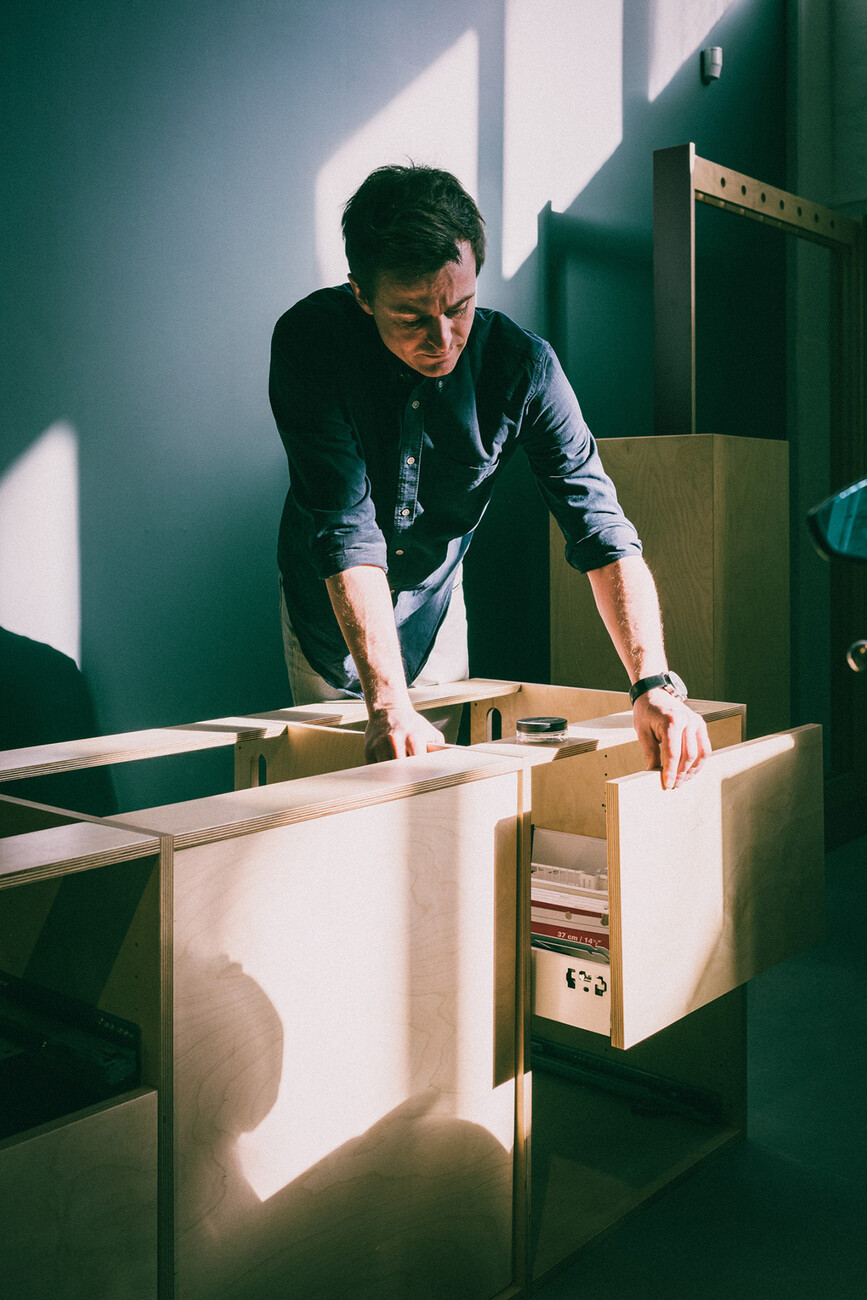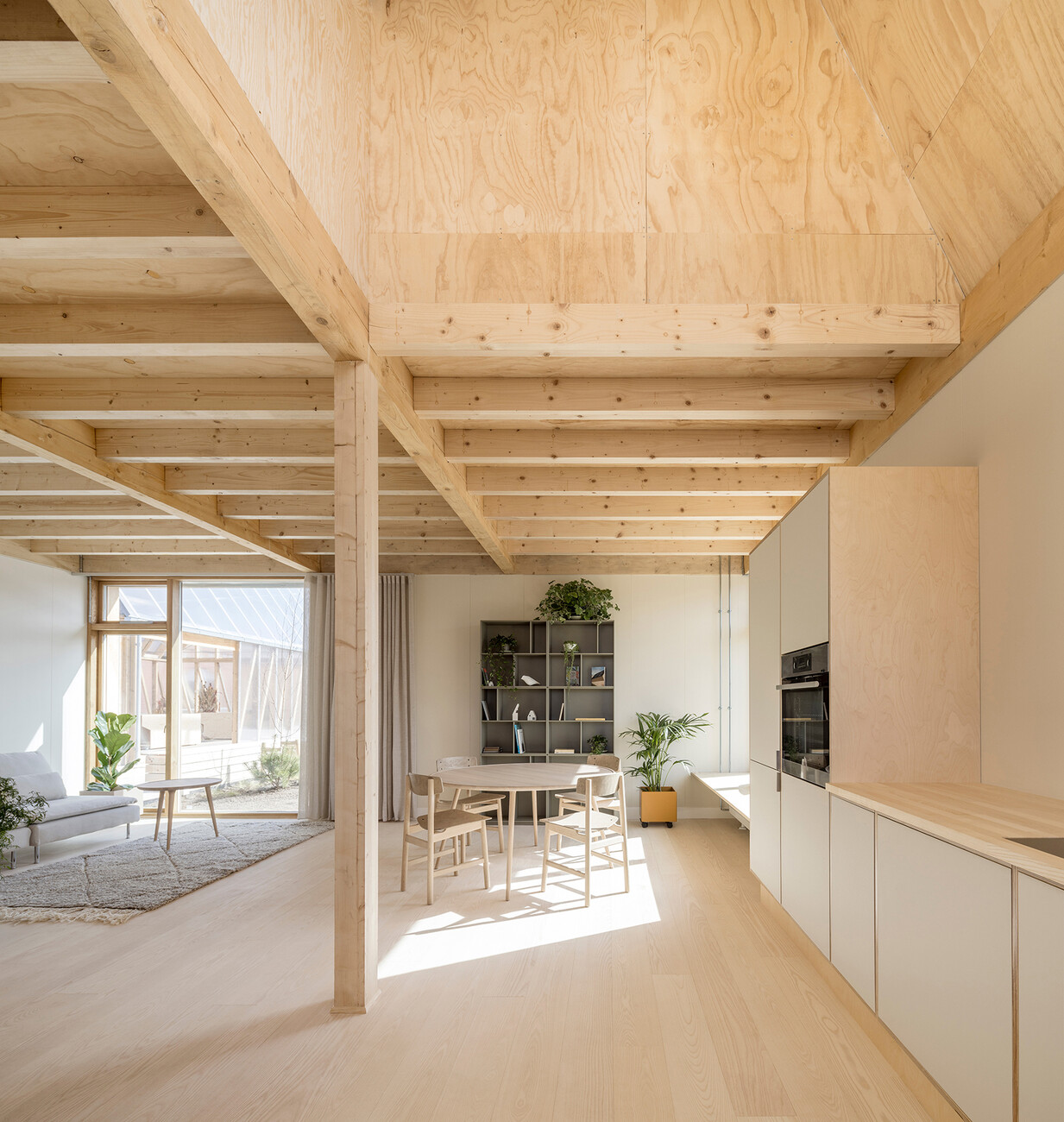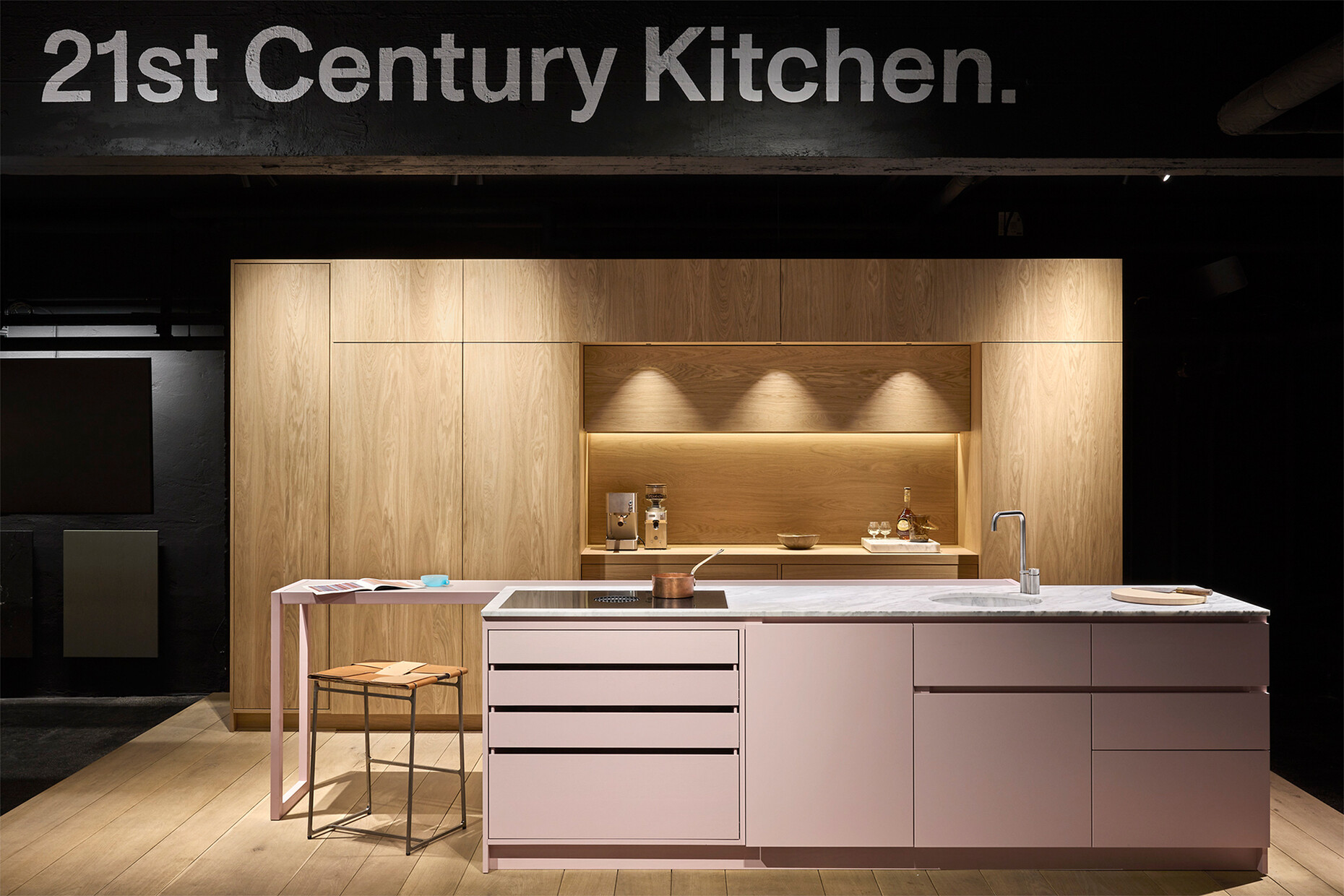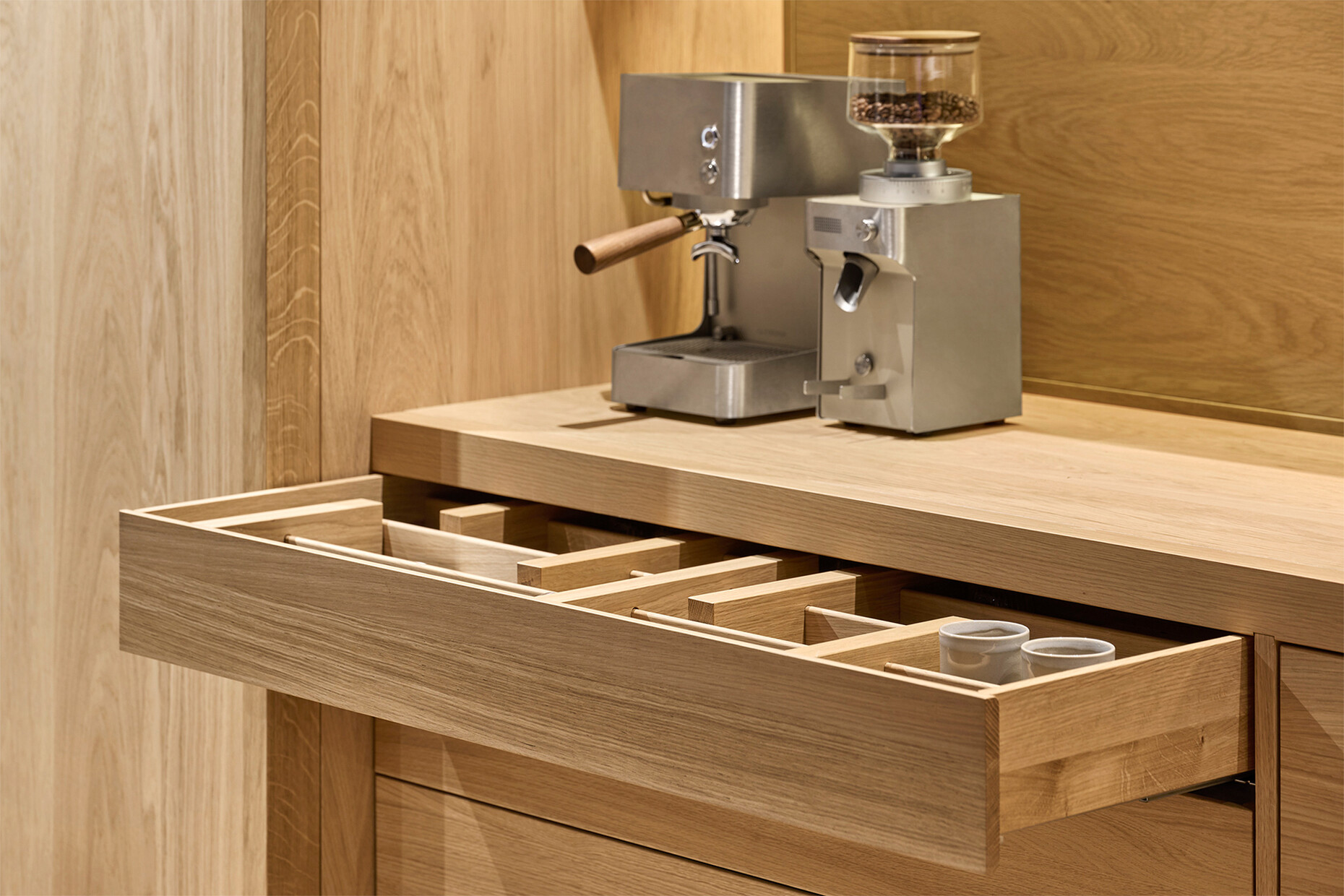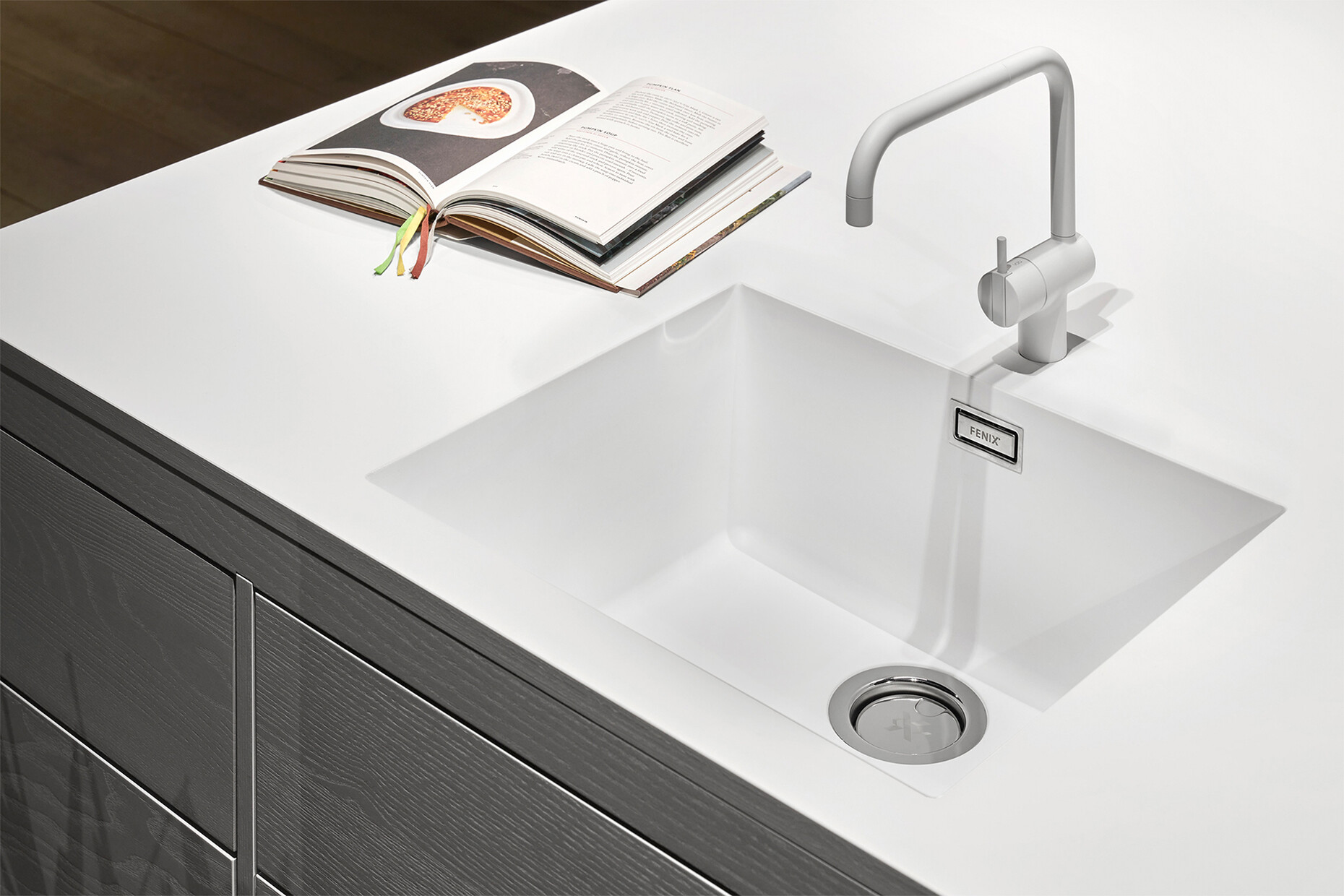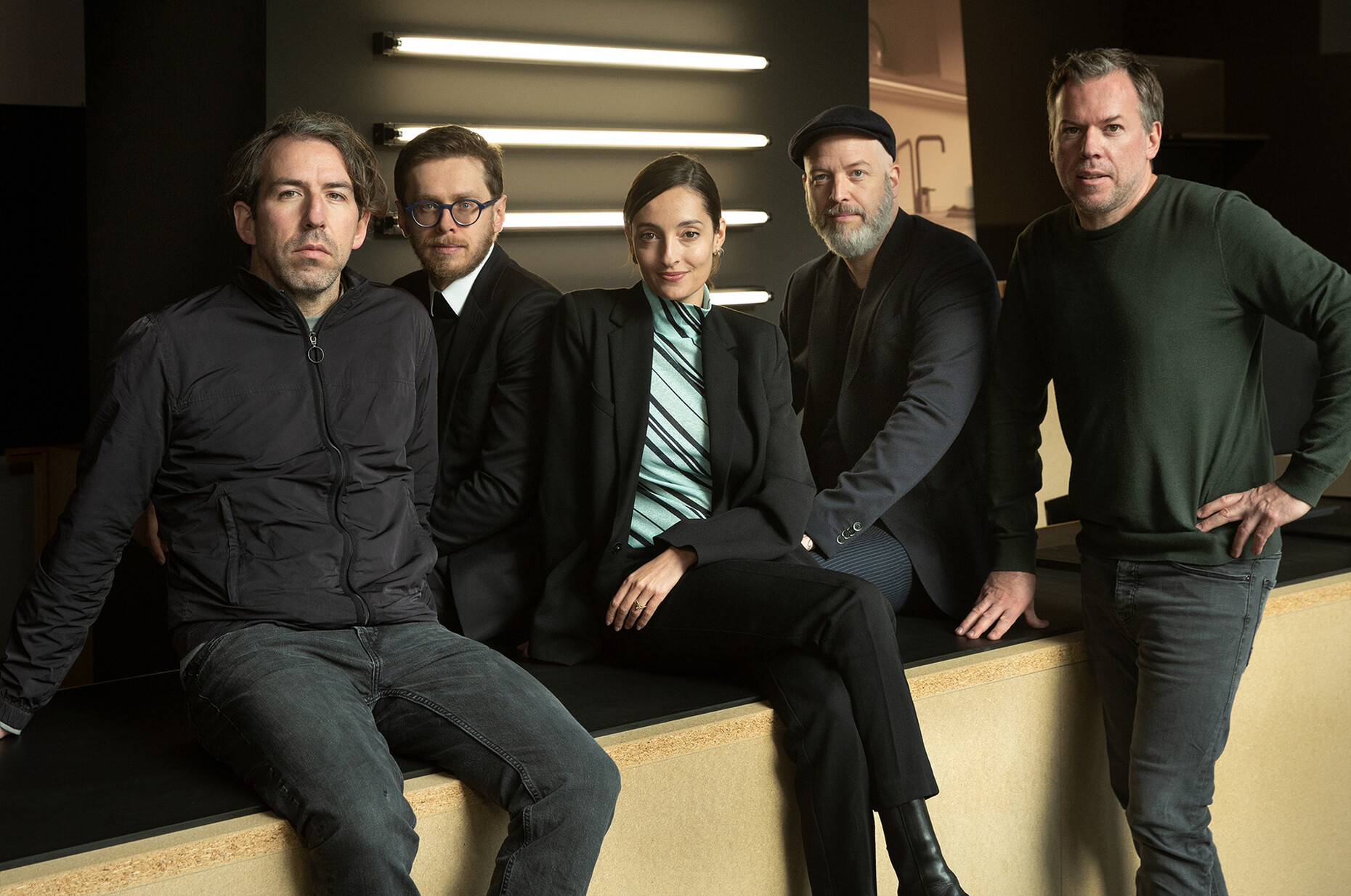Sustainability
The (r)evolution of the kitchen
In an effort to minimise our waste and create durable, long-lasting products that can last a lifetime, Stykka manufactures circular kitchens and interiors. "Our digitally managed products are easy to integrate into any project. They ensure that operating costs can be reduced by around 60 per cent and the throwaway mentality when it comes to our interiors can be reduced by more than 70 per cent. And at a cost that is less than 20 per cent higher than their environmentally harmful alternatives," says Jarl Engelbrecht Vindnæs, founder of Stykka.
In the interests of durability and longevity, Stykka products are made from robust and hard-wearing FSC-certified plywood. "Wood stores CO2 like a bank, and we want to keep it that way. That's why we offer a recycling system where customers can return broken parts to Stykka for refurbishment and reuse," explains Vindnæs. This works because all Stykka products can be completely and easily dismantled, making it easy to replace worn parts. Modules that are no longer needed can be refurbished and recycled at Stykka, increasing the product's lifespan. "Each part is labelled with a TrackID, which consists of the name of the element, a QR code and an RFID chip that links it to our database and its unique material passport," says Vindnæs about the benefit of all elements being delivered with a digital twin. "We believe that there is great economic potential when products and services contribute to stopping climate change. Through a range of circular products, we enable our customers to use their purchasing power to produce less waste and gain added value in the process.
Interview with Jarl Engelbrecht Vindnæs, founder of Stykka
Why did you found Stykka?
Jarl Engelbrecht Vindnæs: Stykka was born out of the urgency to reform the construction industry. Our goal is not just to produce furniture, but to revolutionise the industry with traceable, upgradable products that contribute to a circular economy. We are here to show that sustainability is not just an idealistic concept, but an achievable reality. More than a company, Stykka is a response to an environmental imperative by focusing on smarter consumption and minimising waste. We are taking steps to ensure that resources are not only consumed but also valued, demonstrating that a sustainable approach is not only possible but essential for our future.
How do you develop your design?
Jarl Engelbrecht Vindnæs: We have an incredible team of designers, technicians and carpenters. They all bring in their professional aspects, we work side by side in our Stykka lab where we design, prototype, build and develop, which makes our process efficient and fast.
How sustainable are your kitchens designed?
Jarl Engelbrecht Vindnæs: The most sustainable products are the ones you never buy. The next best thing is products that you never throw away, and that's where we come in. We make products that are beautiful and functional and that you can keep adding new functions, fronts and colours to, while at the same time creating a minimum of waste and environmental impact. It is difficult to measure the sustainability of something. Nevertheless, we dynamically calculate an accurate ESG report for every single product at every single location. This allows our users to estimate exactly how much CO2 the manufacture of our products costs our environment. We want to be transparent and therefore consider it important to inform our customers that our products are built and designed to be reusable and last as long as possible. We use FSC-certified plywood, one of the most robust wood materials, which extends the life of the products.
What has been the most exciting project you have realised so far?
Jarl Engelbrecht Vindnæs: It is impossible to overlook our involvement in Living Places Copenhagen. This project is proof that affordable and sustainable construction is also possible on a large scale. The houses here emit only 3.8 kilograms of CO2 per square metre per year. It is a compelling example of how the industry can lead the way in setting sustainable standards by exceeding the strict requirements of Danish legislation of 12 kilograms of CO2 per square metre per year.
The J*Gast design team also focuses on high-quality materials such as real wood veneers, solid woods, lacquered surfaces in different haptics and colours, ultra-matt and highly durable laminates as well as metals and natural stones in harmonious combinations under the motto of "reinventing the fitted kitchen". From a design perspective, J*Gast has developed a new kitchen system that bridges the gap between customised kitchens and standardised industrial solutions and aims to combine the attention to detail of craftsmanship with the strengths of industrial production. "The kitchen has been systemically rethought and freed from its established corset of carcasses. Without this classic carcase construction method, there are completely new possibilities for designing kitchens and the freedom to create the best customised kitchen for any architecture," says the J*Gast design team.
By generating individual components rather than relying on prefabricated assemblies, the kitchens can be customised to the usual fixed widths of the carcasses. "This is made possible by the patented frame, which is supplied pre-assembled and fixed to the wall. The frame structure can be customised to suit any architectural situation. The modules are connected by individual side panels, in contrast to conventional carcase kitchens, where two surfaces always meet," says J*Gast. The kitchens are also highly customisable in terms of fittings.
Jan Heinzelmann, Gerhardt Kellermann, Ana Relvão, Sven Petzold and Tobias Petri are multi-award-winning industrial designers and cabinetmakers with many years of experience. The five form the collective and acronym behind J*Gast. They meet regularly on Fridays to talk about design, principles and values in the context of cuisine and cookery culture. In a collective collaboration, they developed the concept of the J*Gast kitchen and addressed fundamental questions: How do we want to live? Work? Eat? Communicate? Come together? How do we want to consume? Accordingly, the kitchen is conceived systemically and yet can still be individualised.
Interview with J*Gast
The biggest advantage of your kitchens compared to the competition?
J*Gast: With the J*Gast approach, we have freed ourselves from the classic kitchen carcase. In conventional system kitchens, carcasses are joined together, which leads to a doubling of the side walls. J*Gast saves material by inserting individual side panels into the frame construction. Drawer units and doors can be planned flexibly in terms of width and height. The prefabricated frame fits into any architecture. The system therefore allows maximum flexibility, saves material and significantly reduces the transport volume.
How sustainable are J*Gast kitchens planned?
J*Gast: The sustainability of J*Gast kitchens is initially manifested in the new design and intelligent solutions. The aim is to continuously scrutinise and optimise all processes, conserve resources and guarantee long-lasting quality. J*Gast uses solid wood for frames, front beams, pull-outs, drawers and interior partitions. Real wood veneered panel materials are used for side panels, shelves and some of the fronts. Aluminium is not used and plastic elements are reduced. We also recommend using regional natural stone for the worktops as far as possible. The material reduction resulting from the frame system is also noticeable in the up to 50 per cent lower transport volume thanks to flat-packaging. Resources are conserved and the CO2 footprint is reduced.

